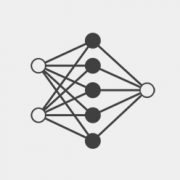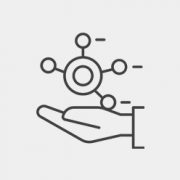We are developing multiple AI solutions to reduce morbidity and mortality for mothers and children in low-resource settings by improving the quality of primary care, and strengthening the first 1,000 days of life.
The first 28 days of an infant’s life, the neonatal period, is a time of rapid development and change. It is an extremely vulnerable time, with the highest risks of developing post-birth complications, congenital conditions, and infant mortality. Research suggests that many of these deaths are preventable if the baby’s weight can be determined in the first week after birth – an enormous problem in regions where a significant number of births still take place at home, with no trained midwife or medical professional in attendance.
According to UNICEF, about 20 million low birthweight (LBW) babies (those with a birth weight under 2.5 kg) are born worldwide each year, most of them in developing countries. For LBW babies, the neonatal mortality rate is 20 times higher, and they are at increased lifelong risk of disease and poor health.
Despite persistent global efforts, vulnerable low birthweight (LBW) babies remain at risk of not receiving appropriate care due to gaps in timely and accurate birthweight measurement. In many parts of the world, vital measurements like weight are not consistently and accurately captured due to issues in the supply, maintenance, and performance of weighing equipment. Spring balances are commonly used, cultural taboos don’t allow outsiders to touch newborns, and erroneous manual entries and data tampering abound. Additionally, it is evident that many expectant mothers in developing countries still deliver at home without the assistance of skilled birth attendants or the facilities to assess the health status of the newborn.
The first 28 days of life, or the neonatal period, is the most vulnerable time for a child’s survival. Our Newborn Anthropometry tool facilitates anthropometry—the measurement of height, weight, chest circumference, head circumference, and mid-upper arm circumference (MUAC)—during the first 42 days of life. It helps frontline health workers take anthropometric measurements using an Android smartphone.
Conventional methods for monitoring children’s growth face challenges like equipment maintenance, replacing broken or uncalibrated tools, and accurately transcribing data, which raises risks of data tampering. This tool is designed for frontline workers and can be used through a basic smartphone to capture precise measurements of newborns (0–42 days) with a short video. It generates accurate, real-time, and tamper-proof measurements for weight, height, head, mid-upper arm, and chest circumference, making growth monitoring more accessible and reliable in community settings.
The tool enables frontline workers to take videos with basic camera requirements of 30 FPS and a 5 MP camera, making it functional on old smartphones with limited capabilities. Additionally, videos can be uploaded in segments, facilitating access and usage in areas with patchy network coverage. The text-to-speech feature simplifies tasks like consent collection, making the process easier for workers with varying literacy levels and tech familiarity.

© 2025 Wadhwani AI
ROLES AND RESPONSIBILITIES
An ML Engineer at Wadhwani AI will be responsible for building robust machine learning solutions to problems of societal importance; usually under the guidance of senior ML scientists, and in collaboration with dedicated software engineers. To our partners, a Wadhwani AI solution is generally a decision making tool that requires some piece of data to engage. It will be your responsibility to ensure that the information provided using that piece of data is sound. This not only requires robust learned models, but pipelines over which those models can be built, tweaked, tested, and monitored. The following subsections provide details from the perspective of solution design:
Early stage of proof of concept (PoC)
Late PoC
This is early to mid-stage of AI product development
Post PoC
Responsibilities during production deployment
We realize this list is broad and extensive. While the ideal candidate has some exposure to each of these topics, we also envision great candidates being experts at some subset. If either of those cases happens to be you, please apply.
DESIRED QUALIFICATIONS
Master’s degree or above in a STEM field. Several years of experience getting their hands dirty applying their craft.
Programming

ROLES AND RESPONSIBILITIES
As an ML Scientist at Wadhwani AI, you will be responsible for building robust machine learning solutions to problems of societal importance, usually under the guidance of senior ML scientists. You will participate in translating a problem in the social sector to a well-defined AI problem, in the development and execution of algorithms and solutions to the problem, in the successful and scaled deployment of the AI solution, and in defining appropriate metrics to evaluate the effectiveness of the deployed solution.
In order to apply machine learning for social good, you will need to understand user challenges and their context, curate and transform data, train and validate models, run simulations, and broadly derive insights from data. In doing so, you will work in cross-functional teams spanning ML modeling, engineering, product, and domain experts. You will also interface with social sector organizations as appropriate.
REQUIREMENTS
Associate ML scientists will have a strong academic background in a quantitative field (see below) at the Bachelor’s or Master’s level, with project experience in applied machine learning. They will possess demonstrable skills in coding, data mining and analysis, and building and implementing ML or statistical models. Where needed, they will have to learn and adapt to the requirements imposed by real-life, scaled deployments.
Candidates should have excellent communication skills and a willingness to adapt to the challenges of doing applied work for social good.
DESIRED QUALIFICATIONS
